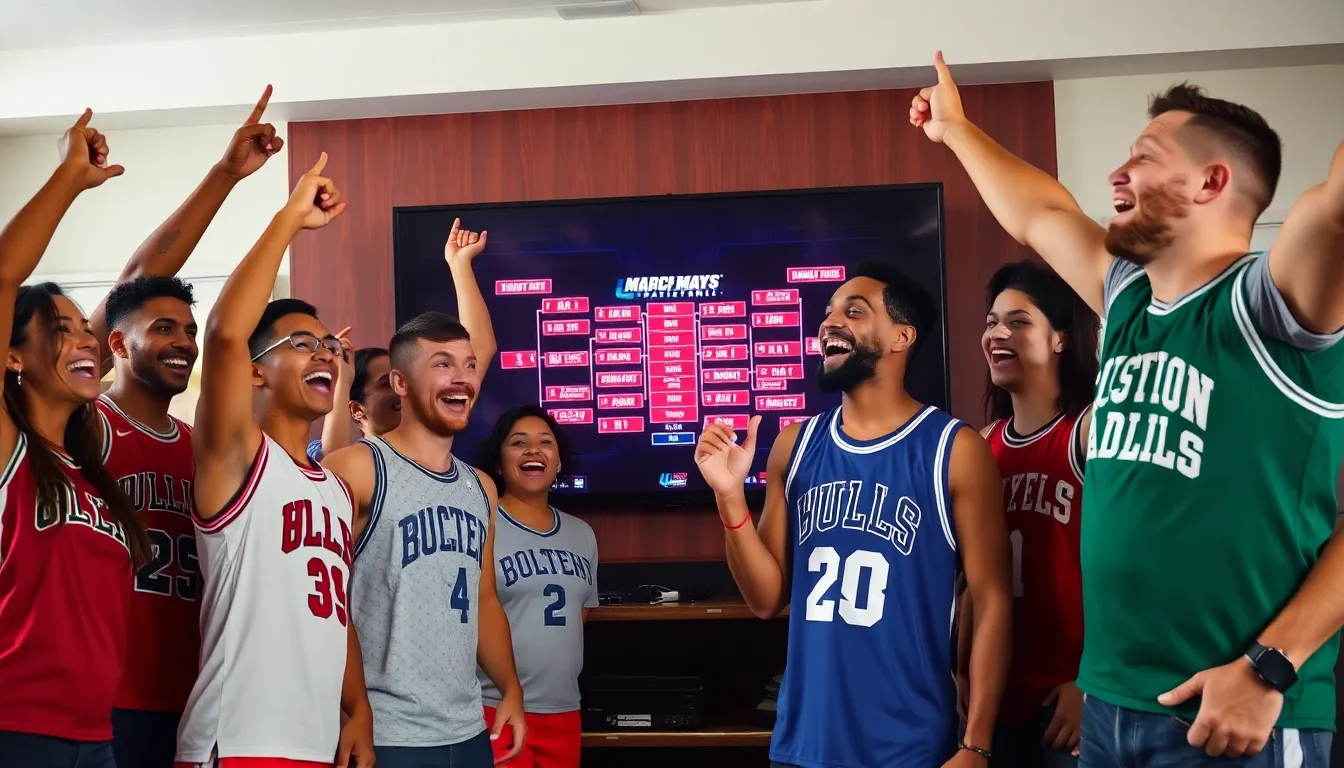Table of Contents
ToggleAs March Madness unfolds, basketball fans everywhere scramble to fill out their brackets, dreaming of that elusive perfect prediction. But let’s face it—finding a flawless bracket is like searching for a unicorn in a haystack. With upsets and surprises around every corner, the odds are stacked against even the most seasoned sports analysts.
So, is there any perfect bracket left out there? The short answer is: probably not. But that doesn’t mean the fun has to end! Whether you’ve already tossed your bracket in the recycling bin or are still clinging to hope, the thrill of the game keeps everyone on the edge of their seats. Let’s dive into the madness and explore just how many brackets are still standing and if anyone can claim the title of bracket genius this year.
Overview of Perfect Brackets
Perfect brackets remain a rare treasure in March Madness. The tournament’s unpredictability contributes to the challenge of achieving flawless predictions. As of now, few immaculate brackets exist. Historical data shows that over 17 million brackets entered during the tournament, and less than 1% have a chance of being perfect.
Each year brings surprises, making it difficult for any participant to forecast every game accurately. Injuries, upsets, and unexpected performances often shape the outcomes. These dynamic factors lead to the downfall of many brackets, erasing dreams of perfection.
Currently, tracking the status of remaining perfect brackets reveals a significant decrease as teams advance or exit the tournament. As games progress into elimination rounds, the likelihood of maintaining a perfect bracket diminishes. Statistical analysis suggests that even expert predictions rarely hold up under such intense competition.
While the thrill of March Madness excites fans, it’s important to remember that a perfect bracket isn’t the sole measure of enjoyment. Many participants find joy in the games, regardless of their bracket’s status. Tracking the outcomes fosters community engagement, as friends and family compete to outpredict each other.
Ultimately, the quest for perfection adds an extra layer of excitement to the tournament. Observers eagerly await the results, hoping to see an exceptional performance that could lead to that elusive perfect bracket. As the tournament unfolds, the dream of being crowned a bracket genius continues to captivate hearts and minds across the nation.
The Concept of Perfect Brackets

Perfect brackets represent the pinnacle of prediction during March Madness. Achieving such a feat is exceptionally rare, given the chaotic nature of the tournament.
Definition and Importance
A perfect bracket entails correctly predicting the outcome of every game in the tournament. This significance lies in the challenge it presents, as participants engage in friendly competition. The pursuit of a flawless bracket captivates fans and fuels conversations. Even making accurate predictions can feel rewarding, but the prospect of achieving perfection drives excitement. As the tournament progresses, the rarity of achieving perfect brackets amplifies the stakes for both casual fans and seasoned participants alike.
Historical Context
Historically, the probability of crafting a perfect bracket has proven elusive. Statistics show that less than 1% of the 17 million brackets entered each year attain perfection. In 1985, the NCAA introduced the tournament’s modern format, further complicating accurate predictions. Instances of major upsets have shaped the bracket landscape, making surprises commonplace. For example, in 2018, No. 16 seed UMBC defeated No. 1 seed Virginia, marking the first such victory in NCAA history. Such events contribute to the ongoing allure of perfect brackets and the stories they generate each tournament season.
Factors Affecting Bracket Perfection
Achieving bracket perfection is challenging due to various unpredictable elements. Understanding these factors helps explain why flawless brackets are so rare.
Randomness and Variability
Tournament outcomes often hinge on randomness and variability. Every game presents unique circumstances that can shift momentum. Unexpected injuries affect team performance, while upsets can turn favorites into underdogs. Teams not performing to expectations lead to surprises that derail many brackets. Random events like last-second plays can also determine game results. This unpredictability ensures that even the most informed predictions may falter.
Statistical Models
Using statistical models provides a framework for predicting outcomes. Analysts employ metrics such as team performance, player statistics, and historical data to create probabilities. Models analyze past games to assess matchups and potential outcomes. Despite the utility of these tools, even the best models cannot account for every variable. Human factors, such as team dynamics and game-day conditions, remain unquantifiable. Statistical models assist in making informed choices, but they still encounter limitations in predicting the unforeseen events that shape the tournament.
Current Trends in Bracket Predictions
Bracket predictions face continuous evolution driven by advancements in technology and expert strategies.
Technology and Algorithms
Quantitative analysis increasingly shapes bracket predictions. Many analysts use complex algorithms to simulate game outcomes, employing metrics such as offensive efficiency and defensive ratings. Data-driven models analyze historical performance to project results, offering insights that enhance predicting accuracy. Machine learning techniques continuously adjust these models based on real-time statistics from ongoing games. Technology also facilitates fan engagement through interactive platforms. These platforms allow users to make informed decisions by presenting predictive analytics alongside traditional predictions. Increased access to data drives more nuanced understanding of teams and players.
Expert Opinions
Insights from sports analysts provide additional layers to bracket predictions. Experts leverage their knowledge of team dynamics, player conditions, and coaching strategies to make educated guesses. Historical knowledge proves invaluable, especially when assessing upsets based on team performance metrics. Renowned analysts frequently share their predictions through blogs and podcasts, creating a dialogue among fans. Collaborative discussions among experts can influence public perception, swaying bracket choices. Accurate insights boost confidence for casual players enticing them deeper into the competition.
The Search for Perfect Brackets
Finding a perfect bracket remains a challenge as the tournament unfolds. The quest for an unblemished prediction captivates many, pushing participants to explore various strategies.
Notable Attempts and Their Outcomes
Some notable attempts at achieving perfect brackets surfaced in recent tournaments. In 2019, a standout entry managed to remain perfect through the first 48 games, highlighting the immense skill involved. Challenges often emerge when unexpected upsets take place, leading to the downfall of many hopefuls. Those initial rounds set the stage for dramatic turns that can end dreams of perfection. Achieving a perfect bracket remains a rare feat, with statistical analyses showing that the odds rest significantly against participants.
The Role of Social Media
Social media plays a critical role in shaping bracket predictions. Platforms like Twitter and Facebook create spaces for fans to share insights and predictions, promoting engagement. Popular influencers often provide analysis that can sway opinions, adding layers of strategy for casual participants. Hashtags specifically related to March Madness fuel discussions, allowing individuals to track trends and sentiments in real-time. This dynamic atmosphere enhances the overall experience as fans rally around their brackets, blurring the lines between competition and community. Social media thus amplifies the excitement surrounding the pursuit of perfect brackets, keeping the conversation alive well beyond the tournament.
The quest for a perfect bracket remains a thrilling yet elusive challenge during March Madness. With the tournament’s unpredictable nature and the influence of unexpected events, achieving flawless predictions is a rare feat. As the excitement unfolds, fans continue to engage with their brackets, sharing strategies and insights across social media platforms. While the number of perfect brackets dwindles, the joy of competition and the community spirit keep the dream alive. In the end, it’s not just about perfection but the shared experience that makes March Madness a captivating event for all.





